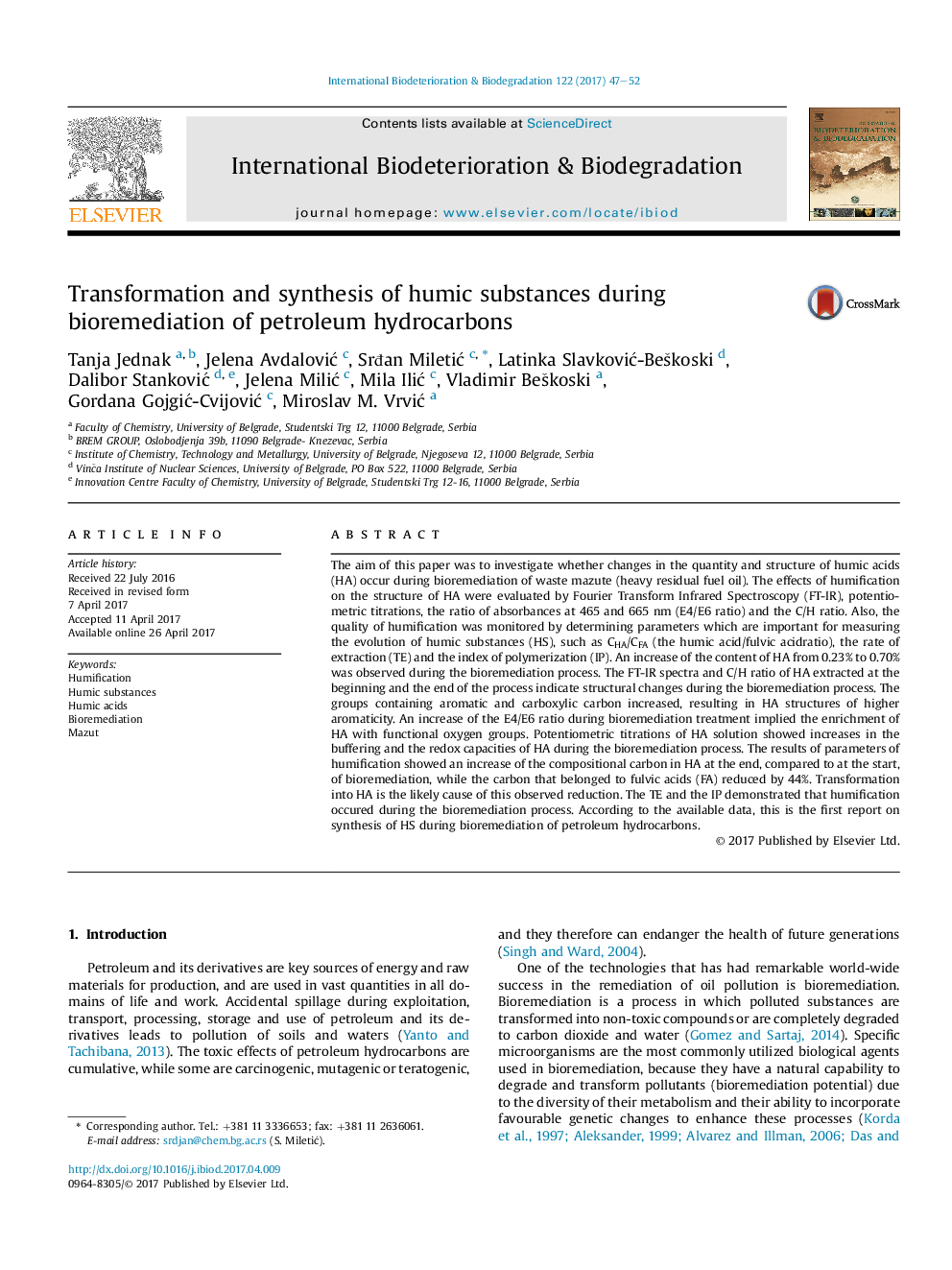| کد مقاله | کد نشریه | سال انتشار | مقاله انگلیسی | نسخه تمام متن |
|---|---|---|---|---|
| 5740359 | 1616295 | 2017 | 6 صفحه PDF | دانلود رایگان |
- During bioremediation of petroleum hydrocarbons humification is occurred.
- An increase of the buffering and the redox capacities of HA.
- An increase of the aromaticity of HA during the bioremediation process.
The aim of this paper was to investigate whether changes in the quantity and structure of humic acids (HA) occur during bioremediation of waste mazute (heavy residual fuel oil). The effects of humification on the structure of HA were evaluated by Fourier Transform Infrared Spectroscopy (FT-IR), potentiometric titrations, the ratio of absorbances at 465 and 665Â nm (E4/E6 ratio) and the C/H ratio. Also, the quality of humification was monitored by determining parameters which are important for measuring the evolution of humic substances (HS), such as CHA/CFA (the humic acid/fulvic acidratio), the rate of extraction (TE) and the index of polymerization (IP). An increase of the content of HA from 0.23% to 0.70% was observed during the bioremediation process. The FT-IR spectra and C/H ratio of HA extracted at the beginning and the end of the process indicate structural changes during the bioremediation process. The groups containing aromatic and carboxylic carbon increased, resulting in HA structures of higher aromaticity. An increase of the E4/E6 ratio during bioremediation treatment implied the enrichment of HA with functional oxygen groups. Potentiometric titrations of HA solution showed increases in the buffering and the redox capacities of HA during the bioremediation process. The results of parameters of humification showed an increase of the compositional carbon in HA at the end, compared to at the start, of bioremediation, while the carbon that belonged to fulvic acids (FA) reduced by 44%. Transformation into HA is the likely cause of this observed reduction. The TE and the IP demonstrated that humification occured during the bioremediation process. According to the available data, this is the first report on synthesis of HS during bioremediation of petroleum hydrocarbons.
Journal: International Biodeterioration & Biodegradation - Volume 122, August 2017, Pages 47-52
